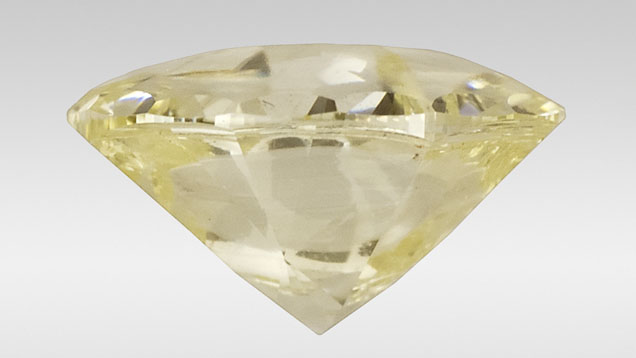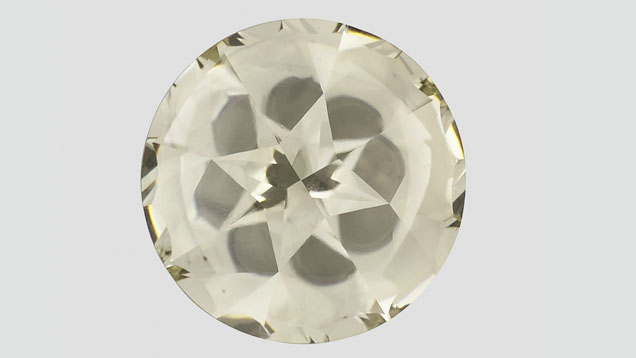Buff-Top Round Diamond

About 30 buff-top round diamonds ranging from 0.25 to 1.50 ct, originally submitted to GIA’s Japanese lab, were received for grading. The buff-top cut has a low cabochon dome with a faceted pavilion (figure 1). These diamonds were cut with four short main pavilion facets (figure 2). This rare cut posed a challenge for the grading staff, as the smooth dome and faceted pavilion combined to produce internal reflections that made it very difficult to see clearly into the stone. Although diamonds can be cut with lasers, the polishing process with the use of diamond abrasives into a smooth rounded surface is both laborious and time consuming. The unfaceted dome was likely created using the same technology that produced the first synthetic nano-polycrystalline diamond sphere in Japan in 2011. One Japanese study (T. Okuchi et al., “Micromachining and surface processing of the super-hard nano-polycrystalline diamond by three types of pulsed lasers,” Applied Physics A: Materials Science & Processing, Vol. 96, No. 4, 2009, pp. 833–842) found that pulsed lasers most efficiently produce a smooth, undamaged surface for fine finishing diamonds. A combination of three lasers was used: a near-infrared laser for the rough shaping, and ultraviolet and femtosecond lasers for fine finishing (E. Skalwold, “Nano-polycrystalline diamond sphere: A gemologist’s perspective,” Summer 2012 G&G, pp. 128–131).

Figure 2. Viewed face-up, the buff-top diamond shows an arrangement of four main pavilion facets. Photo by Jian Xin (Jae) Liao.
This advancement in diamond finishing offers new possibilities for a variety of interesting shapes and forms that could not be achieved with previous methods of polishing and faceting alone. Diamond cabochons, completely smooth spherical beads, and sugarloaf cuts could emerge next.



